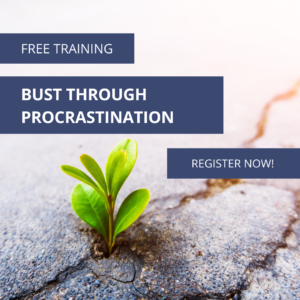In September 2020, as we were moving into an especially challenging phase of the pandemic, I listened to an episode of Brené Brown’s podcast, “Unlocking Us.” The guest was Scott Sonenshein, PhD, author of “Stretch: Unlock the Power of Less – and Achieve More than You Ever Imagined.” I highly recommend reading it, and am still thinking about his book and that podcast a year later. His message is as relevant now as it’s ever been.
It was the perfect time for their discussion about Scott’s book and research. We were all struggling with the limitations forced on us by the pandemic. Professionals were trying to keep their businesses afloat over Zoom, often while supervising kids doing remote school and/or worrying about elderly or vulnerable family members. Time management and productivity felt impossible sometimes. Financial pressure was building for many families. Many people felt stuck, or fearful, or unproductive. We didn’t have access to our typical support networks and resources.
And now, a year later, a lot of that is still true. A lot of people still feel… stuck. Unsatisfied with where they are and unsure where they’re going.
“Stretch” is all about the power of (you guessed it) stretching.
From his website, Dr. Sonenshein describes stretching like this:
“Stretching is being resourceful — doing more with what you have. It’s a learnable skill that applies in good times as well as bad times to help us reach our goals. People think of resourcefulness as something done out of need when facing shortages or to resolve problems, but that’s just one aspect of it. Stretching means we don’t start from feeling like what we have isn’t enough. Instead, we embrace what we already have and then creatively put those resources to work, such as time, money, relationships, and materials.”
Dr. Sonenshein says that the alternative to stretching is chasing: being focused on acquiring more instead of embracing what we already have. With a chasing mentality, we believe that we can accomplish more when we have more resources.
What Does That Type of Thinking Do For You?
That kind of thinking can be motivational when you’re trying to learn a new skill or negotiate a higher salary. But being focused on acquiring things tends to come at the expense of appreciating and using the things you already have. Plus, your ability to acquire the things you’re chasing depends largely on external factors. What happens when, for example, a global pandemic strikes? Or a financial crisis changes your industry overnight?
On “Unlocking Us,” Dr. Sonenshein talks about moving to Silicon Valley during the tech boom of the late 1990s, when millions of dollars were flooding into his business. It took the collapse of the dotcom bubble—and the death of friend Jeremy Glick, one of the heroes on Flight 93 on 9/11—to recognize that he was living his life with a chasing mentality. His focus was on acquiring more money and out-doing other people, and not on doing meaningful work or appreciating the life he already had.
Sound familiar? Of course it does. We’ve all been “chasey” rather than “stretchy” at times. The notion that we need to acquire more things and outperform our competitors is ingrained in most of us from a very young age.
It takes real effort and time to unlearn that mentality. In this regard, a global pandemic might actually have helped. One of the few upsides of the crisis is that it forced many people to slow down and created time to look inward. And it also forced many of us to practice embracing our current resources and thinking about how to put them to work for us.
Stretching, Chasing and Time Management: Three Tips to Try
Being “stretchy” goes hand-in-hand with good time management and productivity. A stretching mentality opens you up to creative thinking and creates clarity. It helps you think about the big picture for your life and your business, as well as the day-to-day stuff, which means you’re able to align your actions with your goals and use your time as productively as possible.
I have three tips for adopting a stretching mentality.
- Reflect on a time when you were forced to be “stretchy” and make do with limited resources. Did you find a creative solution? Did you learn something valuable from that experience?
- Compare your productivity and time management abilities when you’re feeling “stretchy” vs. “chasey.” Everyone is wired differently, and some people will be more productive at certain tasks when they’re chasing and some when they are stretching. Think about how these mentalities work in your life.
- Identify a few resources you have at your disposal right now, which you can use to help you reach a goal. For example, instead of focusing on the fact that you can’t afford $100,000 to hire a new employee to help you with increased volume, think about what you can do with the money your business does have.
I absolutely believe that transforming your life and business doesn’t require a ton of resources.
It starts with giving yourself the time away from the day-to-day scramble to do big-picture thinking about your life and goals. From there, you can learn habits that allow you to create peaceful productivity.
That’s what my Time Matters Boot Camp 90-Day Virtual Program does. My online productivity and time management training is designed to help busy professionals defeat the challenges that hold them back. Join now and learn how to take control of your time and goals in a way that works for your brain, your life, and your business.
Click here for details and registration.
Gratefully,
Sarah
- Stress Management for a Productive Spring: Are You “Normal”? - April 4, 2024
- 3 Things Realtors Can Control in a Busy Spring Real Estate Market - March 15, 2024
- How Do You Manage Your Time So Billable Hours Don’t Manage You? - February 29, 2024



